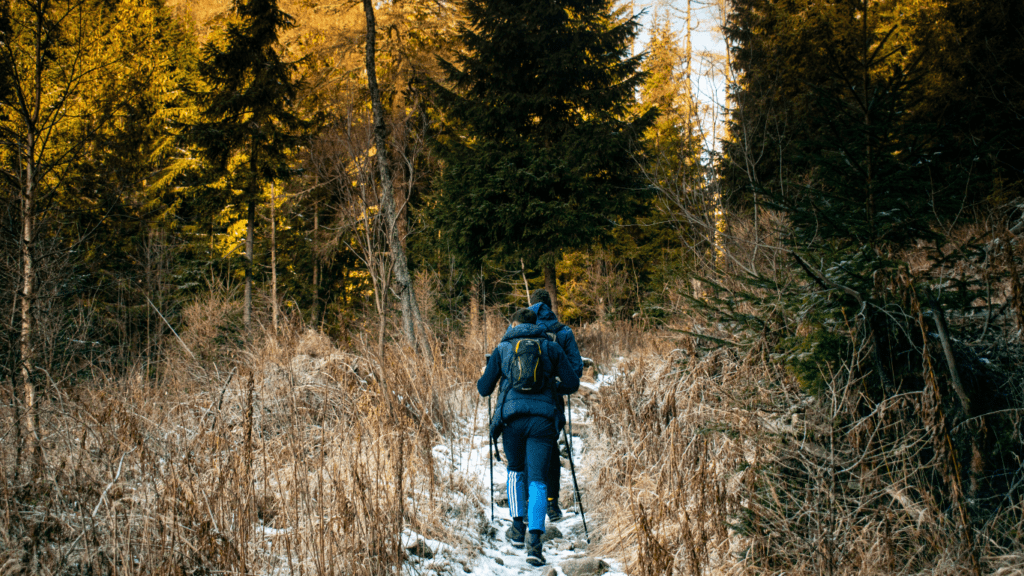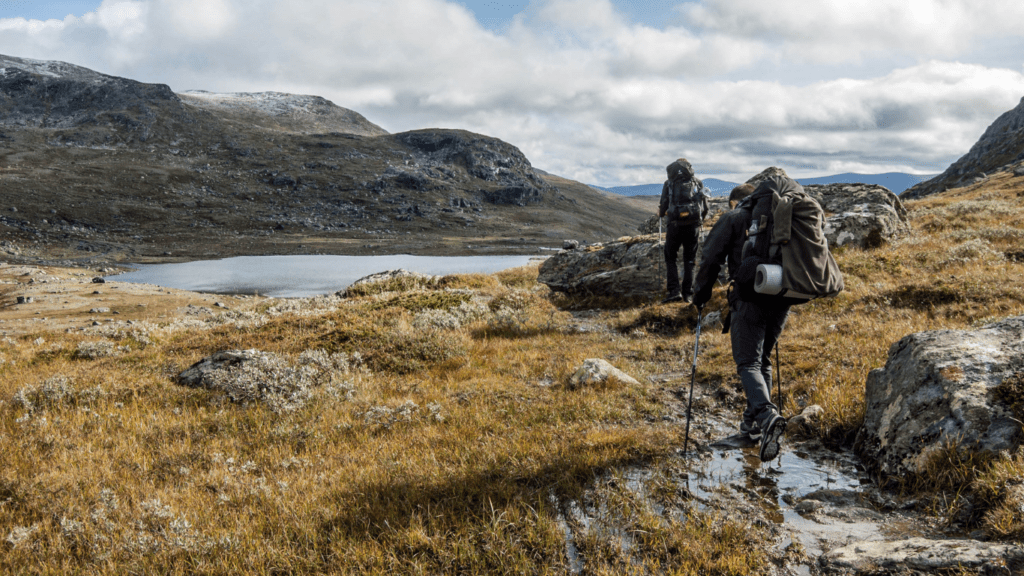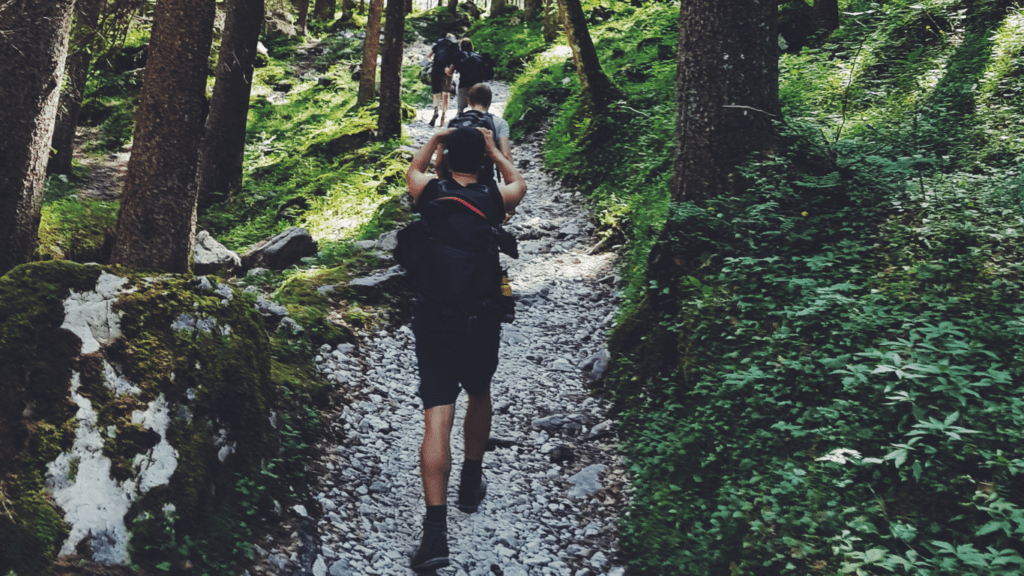Importance Of Trail Safety
Trail safety is crucial for anyone venturing into the wilderness. It ensures not only a smooth journey but also minimizes the risk of accidents and emergencies.
Protection From Injuries
Proper trail safety habits, like using appropriate footwear and gear, reduce the likelihood of sprains, fractures, and other injuries. Wearing hiking boots with good ankle support, for instance, can prevent common issues like twisted ankles.
Avoidance Of Wildlife Encounters
Understanding animal behavior and possessing the knowledge to handle unexpected wildlife encounters keeps hikers safe. For example, making noise while hiking helps prevent startling bears, and carrying bear spray provides a defense mechanism.
Preparedness For Weather Conditions
Monitoring weather forecasts before heading out and packing suitable clothing and gear ensure hikers are ready for sudden weather changes. A rain jacket and thermal wear can protect against hypothermia during unexpected cold fronts.
Knowledge Of The Terrain
Familiarizing oneself with the trail’s difficulty, length, and characteristics helps in planning the hike more effectively. This preparation includes knowing the elevation gain and identifying potential hazards like steep cliffs or stream crossings.
Effective Communication
Carrying a map, compass, or GPS device, and knowing how to use them, keeps hikers on the correct path. Additionally, letting someone know your planned route and expected return time ensures help can quickly arrive if needed.
Hydration And Nutrition
Staying hydrated and well-nourished is vital for maintaining energy levels and cognitive function during hikes. Carrying sufficient water and snacks or energy bars can prevent dehydration and fatigue, especially on longer trails.
Emergency Preparedness
Equipping oneself with a basic first aid kit and knowing how to use it can make a critical difference in the event of an injury. Including items like bandages, antiseptic wipes, and a compact multi-tool ensures readiness for common hiking injuries.
Trail safety isn’t just about avoiding mishaps; it’s about ensuring every hike is enjoyable and memorable for the right reasons.
Preparation Before Hiking
Proper preparation enhances trail safety, ensuring a smooth and enjoyable hiking experience. Getting ready involves knowing the specifics of the trail, checking environmental conditions, and packing the right equipment.
Research The Trail
I start by understanding the trail’s length, difficulty, and elevation change. Most official trail websites and apps like AllTrails provide this information. If available, I review hikers’ comments for real-time insights. Knowing the terrain helps plan for potential challenges, like steep climbs or rocky paths.
Check The Weather
I always check the weather forecast for the hiking day. Reliable sources like the National Weather Service offer accurate predictions. Unfavorable weather, such as thunderstorms or extreme heat, can impact safety. Being informed allows me to reschedule or adjust plans accordingly.
Pack Essential Gear
Packing the right gear is crucial for trail safety. My backpack typically includes:
- Water: At least 2 liters for a half-day hike.
- Snacks: High-energy options like nuts and granola bars.
- Map and GPS: Keeping both ensures I stay on track.
- First Aid Kit: Essentials include bandages, antiseptics, and pain relievers.
- Clothing: Layered for weather changes, including a rain jacket.
These essentials prepare me for various trail conditions, enhancing my safety and comfort while hiking.
On The Trail

Staying safe on the trail is crucial for a successful hike. Let’s explore some essential practices.
Stay On Marked Paths
Hikers should always stay on marked paths. Straying off-trail increases the risk of getting lost. Marked trails are usually designed to be safe and environmentally sound. Following them helps protect the ecosystem. For instance, trampling plants or disturbing wildlife can have long-term effects.
Be Aware Of Your Surroundings
Being aware of your surroundings enhances safety on the trail. Watch for trail markers to avoid losing your way. Look out for wildlife, but if you encounter animals, keep a safe distance. Pay attention to changing weather conditions since they can affect trail conditions. Regularly checking your location on a map or GPS prevents disorientation.
Hydrate And Take Breaks
Maintaining hydration and taking breaks are vital for endurance. Carry adequate water in a reusable bottle and drink regularly to avoid dehydration. Plan for breaks at scenic spots or predetermined intervals to rest and assess your progress. Eating high-energy snacks during breaks replenishes your energy levels, making the hike more enjoyable.
Wildlife Safety
Wildlife safety is essential for a stress-free hiking experience. It involves understanding local wildlife and knowing how to handle encounters effectively.
Understanding Local Wildlife
Learn about the wildlife native to the hiking area. Use resources like parks’ websites or local guides, which often provide information on animals you might encounter (e.g., bears, snakes, mountain lions). Recognize animal tracks and signs to avoid dangerous encounters. Be aware of feeding habits, territory, and times of increased activity. For example, many predators are more active at dawn and dusk.
How To Handle Encounters
- Stay calm and follow specific procedures for animal encounters.
- If you meet a bear, avoid running; instead, back away slowly while keeping eye contact.
- For snakes, give them space and don’t provoke them.
- Tap the ground with a stick to alert them of your presence.
- In mountain lion encounters, make yourself appear larger by raising your arms and speaking loudly.
- Always keep a safe distance and never approach wildlife, even if they appear passive.
- Also, carry deterrents, like bear spray, and understand how to use them.
Emergency Preparedness
Hiking involves risks, so being prepared for emergencies enhances safety. Equip yourself with essential tools and knowledge to manage unexpected situations.
Carrying A First Aid Kit
Carrying a first aid kit is crucial for treating minor injuries on the trail. Pack items like adhesive bandages, antiseptic wipes, gauze pads, and medical tape. Include blister treatment products to handle common hiking issues. Adding pain relievers, antihistamines, and any personal medications ensures comprehensive preparedness.
Knowing Basic First Aid
Knowing basic first aid techniques provides a quick response to injuries. Learn to clean and dress wounds to prevent infections. Practice CPR and Heimlich maneuver to address severe emergencies like cardiac arrest or choking. Familiarize yourself with treating sprains and strains by learning effective wrapping methods. Online resources and local classes can boost your first aid knowledge.
Communication Devices
Reliable communication devices are essential for emergencies. Carry a fully charged cell phone with a backup power bank. A GPS device helps in navigation and sharing your location. A two-way radio offers communication in areas without cell service. Consider a personal locator beacon (PLB) to alert rescue services in critical situations.
Being prepared with these emergency essentials makes hiking safer and more enjoyable.



 Lead Forest Survival Specialist & Outdoor Educator
Timothy Peters is Whisper Forest Ways’ resident expert on wilderness survival and all things related to thriving in the outdoors. With a background in environmental sciences and over a decade of hands-on survival training, Timothy combines scientific knowledge with practical experience to teach readers essential survival skills, such as shelter building, fire making, and foraging. His approach emphasizes respect for the natural world and sustainability, ensuring that all of his methods encourage low-impact interaction with the environment. Whether you’re new to outdoor adventures or a seasoned explorer, Timothy’s detailed guides and insights provide invaluable knowledge for safely and confidently navigating the wild.
Lead Forest Survival Specialist & Outdoor Educator
Timothy Peters is Whisper Forest Ways’ resident expert on wilderness survival and all things related to thriving in the outdoors. With a background in environmental sciences and over a decade of hands-on survival training, Timothy combines scientific knowledge with practical experience to teach readers essential survival skills, such as shelter building, fire making, and foraging. His approach emphasizes respect for the natural world and sustainability, ensuring that all of his methods encourage low-impact interaction with the environment. Whether you’re new to outdoor adventures or a seasoned explorer, Timothy’s detailed guides and insights provide invaluable knowledge for safely and confidently navigating the wild.
